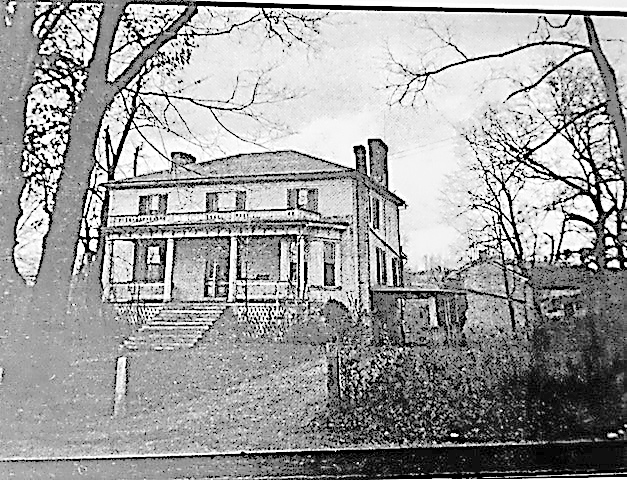This undated photo of the Johnson Reynolds house on Chestnut Street was taken before the Greenbrier County Board of Education purchased it in 1940 for administrative offices. The house was built in 1835 by master builder John Dunn for Johnson and Elizabeth Reynolds on three acres of land. When completed, the house was undoubtedly one the grandest homes in Lewisburg. Johnson Reynolds was a lawyer, circuit judge, and served as clerk of the Court of Appeals.
To the right of the house and barely visible in the photo is a detached brick building that served as the kitchen and possibly lodging for the Reynolds’ enslaved servants.
To reduce the risk of fire destroying all of one’s home, it was not uncommon for early American homes to have detached kitchens. It was up to the servants to transport meals to the dining room in the main house. Behind the kitchen, the photo reveals some more primitive frame or log outbuildings that may have been additional slave quarters.
The kitchen was eventually moved into the house. Bettie Sydenstricker Woodward recalled using the former kitchen as a playhouse when she was a child. In 1977, the detached brick building was moved to the former county library on Washington Street. Dr. John Montgomery who lived near the west end of Chestnut Street heard a commotion about midnight. He put on his clothes, ran outside, and found the building on the move towards Jefferson Street. Although largely abandoned now, the old kitchen served as an annex to the library.
Photo: Courtesy of the Greenbrier Historical Society.
Sources: Greenbrier Historical Society (John F. Montgomery papers), Letters From Lewisburg by Caroline S. Miller, Greenbrier Pioneers and Their Homes by Ruth Woods Dayton.


